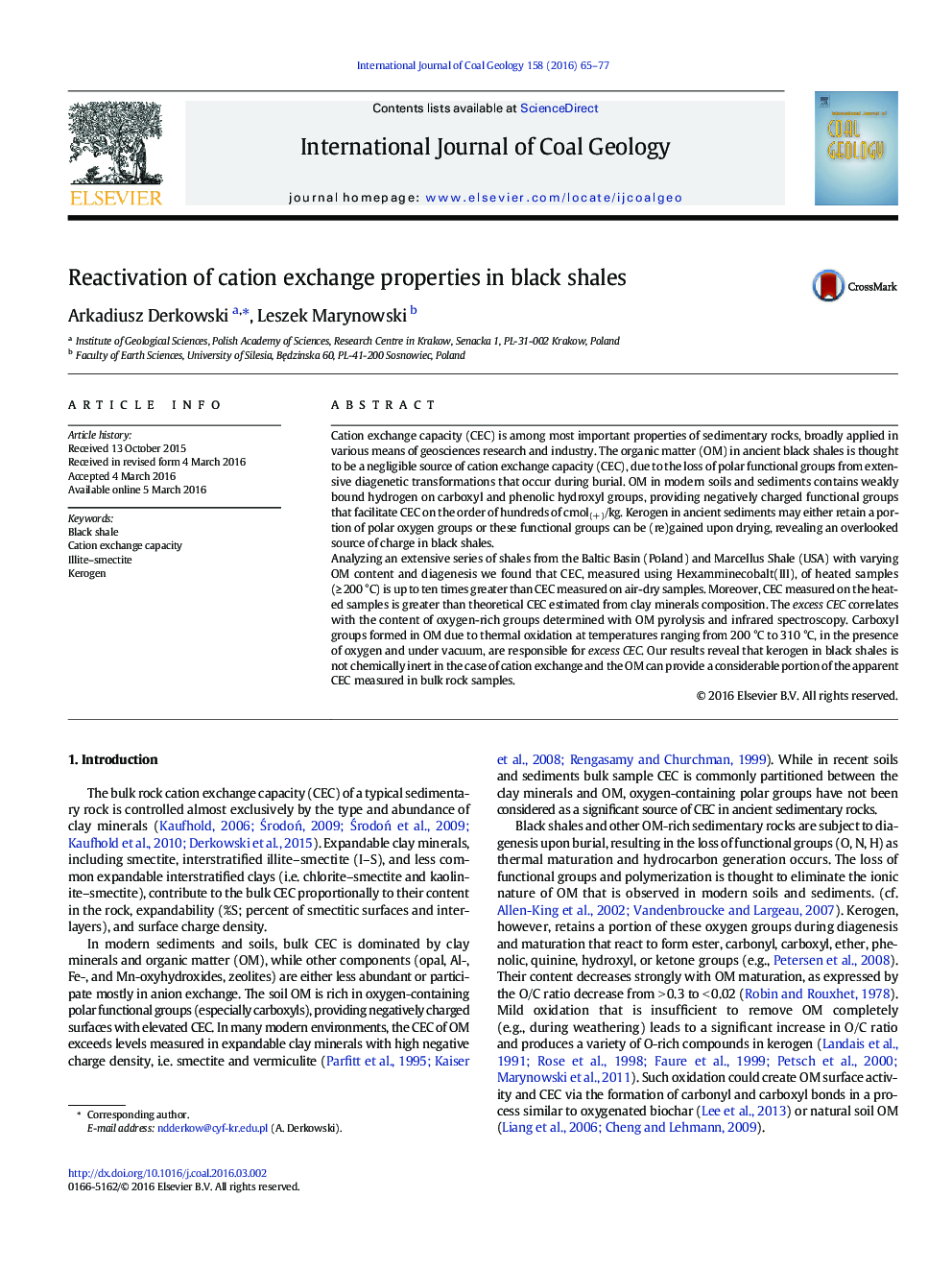| Article ID | Journal | Published Year | Pages | File Type |
|---|---|---|---|---|
| 1752793 | International Journal of Coal Geology | 2016 | 13 Pages |
Abstract
Analyzing an extensive series of shales from the Baltic Basin (Poland) and Marcellus Shale (USA) with varying OM content and diagenesis we found that CEC, measured using Hexamminecobalt(III), of heated samples (â¥Â 200 °C) is up to ten times greater than CEC measured on air-dry samples. Moreover, CEC measured on the heated samples is greater than theoretical CEC estimated from clay minerals composition. The excess CEC correlates with the content of oxygen-rich groups determined with OM pyrolysis and infrared spectroscopy. Carboxyl groups formed in OM due to thermal oxidation at temperatures ranging from 200 °C to 310 °C, in the presence of oxygen and under vacuum, are responsible for excess CEC. Our results reveal that kerogen in black shales is not chemically inert in the case of cation exchange and the OM can provide a considerable portion of the apparent CEC measured in bulk rock samples.
Related Topics
Physical Sciences and Engineering
Earth and Planetary Sciences
Economic Geology
Authors
Arkadiusz Derkowski, Leszek Marynowski,
